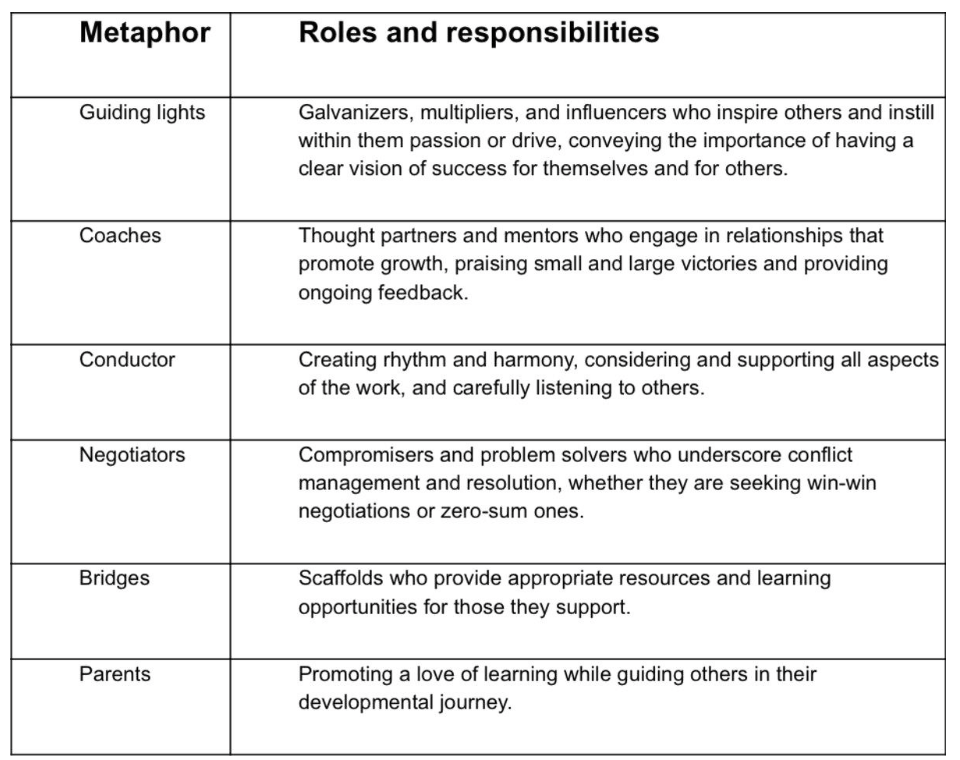Metaphors that illuminate the work of leaders
University Business, June 2018
Why are metaphors useful? Language is central to our humanity, and the language we use defines how we see ourselves, others and the world. If we see arguments as war we respond very differently than if we see them as dance. Over the centuries, metaphors have been used in daily language and thought (Lakoff and Johnson, 2003) providing us with insights about complex phenomena and defining what we see how we behave, and the cultures we shape.
What do we know about leaders’ metaphors?
Studies of leaders’ metaphors underscore their importance because these reflect their understanding of their roles and work (Lumby and English, 2010; Schechter, Shaked, et. al. 2016). Because metaphors reveal different cultural dispositions, they can influence leaders’ interactions and expectations in schools. When leaders use gardening metaphors, for example “seeds to nourish and fertilize”, they imply a different cultural disposition than when they use a directing metaphor, for example, “orchestra conductor or ship steward”.
In my work as an educational consultant who facilitates the work of school principals and district leaders in a wide range of rural, suburban and urban school districts, I have been intrigued by the metaphors educational leaders tend to live by. To explore that question, I asked many leaders to identify the metaphors they draw on. The vast majority of individuals proposed one or two metaphors, and while some metaphors appeared to be more prominent than others, there was no dominant list of metaphors.
The metaphors identified by school leaders underscored very different aspects of their work. Some of the most frequently mentioned metaphors characterized the roles of leaders as guiding lights, coaches, orchestra conductors, negotiators, bridges, and parents, each emphasizing different roles and responsibilities. (See table below)
While each and every one of these metaphors defines a significant aspect of leaders, no single one is sufficient on its own. Each of these roles has a place in schools, and while leaders may operate from a dominant metaphor, they may need to summon other metaphors as a guide for behavior or may draw on the leadership behaviors and roles from others who draw on different metaphors.
Why does the work of leaders deserve situational metaphors?
The contexts in which leaders operate, the situations they face, and the reactions from those with whom they interact, demand an adaptive and multifaceted behavioral repertoire. Over the past 10 years, the work of school leaders has become increasingly complex. Whereas in past decades, the managerial work of leaders was emphasized, today, we expect leaders to be instructionally savvy, politically astute, emotionally adept, and strategically focused.
To avail themselves of metaphors, leaders may be best served by asking themselves:
- What metaphors best capture how I would like to view myself as a leader?
- How do my preferred metaphors facilitate or hinder my ability to deal with different situations?
- Are there other metaphors that I should embrace to enhance my leadership?
- How might I recognize leadership behaviors in others, when I find myself limited by the metaphors I draw from?

Giselle O. Martin-Kniep is an American educator, researcher, program evaluator, and writer.
